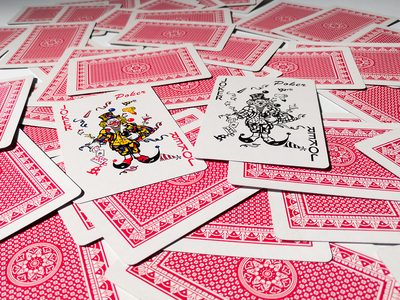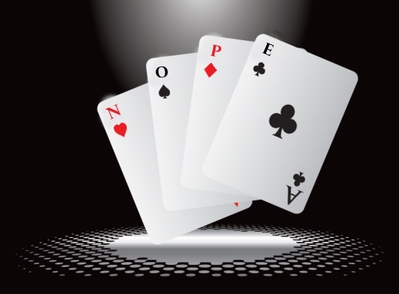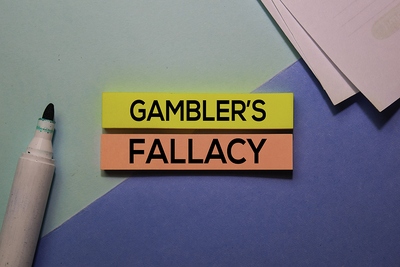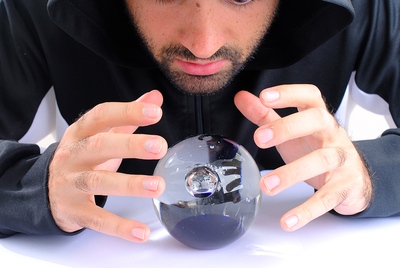 Everyone plays any given casino game in the hope of winning money. You might say it is a bit of fun and that is certainly the right approach but it is undeniable that things are a lot more fun when you are winning.
Everyone plays any given casino game in the hope of winning money. You might say it is a bit of fun and that is certainly the right approach but it is undeniable that things are a lot more fun when you are winning.
“Beating the house” is what we all dream of and over the course of history countless hours have been dedicated to dreaming up systems and methods that might enable this notion to become a reality.
There are many such systems touted as being able to achieve a positive result for the player. Very few work. Card counting in blackjack is one such strategy and spotting wheel or croupier bias at roulette is another. Almost all the others are either illegal (for example marking cards) or, quite simply, they do not work.
They say you never see a bookmaker riding a bike and if that is true then it is probably fair to say you never see a casino-owner flying economy either. The simple reason is that casino games are purposefully designed to give the casino the edge. A margin for the house is factored in and that means that on average, most of the time, they win and the player loses.
Luck can change that in the short-term. A system that your friend read about on the internet, or worse still paid good money for, cannot. Casinos continue to be opened and are generally glitzy, fabulous and cost at least eight figures to build. That should tell you something.
Does Pattern Recognition At Baccarat Work?
 Did you read the introduction above? Does pattern recognition work? No. And No again. Just like pattern recognition in other random events such as a coin toss or roulette, it categorically does not work. Seriously, do not invest any of your time or money into investigating this, reading your friend’s book, paying for any great secret or anything else because that will be time and/or money wasted.
Did you read the introduction above? Does pattern recognition work? No. And No again. Just like pattern recognition in other random events such as a coin toss or roulette, it categorically does not work. Seriously, do not invest any of your time or money into investigating this, reading your friend’s book, paying for any great secret or anything else because that will be time and/or money wasted.
If you walk into a bricks and mortar casino you may well see people making a note of the results in baccarat (you will see people recording blackjack results too) but it’s a waste of time. Online and in some more modern establishments this is done electronically for you and actually, the fact that the casino are happy to do that should give you a really big clue as to the efficacy of any related system.
When it comes to baccarat, people will be keeping a tally of how many hands are won by the player and the banker, and how many are tied. This is the starting point for the concept of pattern recognition. Maths tells us that over an infinite number of hands the following percentage of hands will be won as such:
- Player wins 44.6% of all hands
- Banker wins 45.9%
- Ties occur 9.5% of the time
Pattern recognition and related strategies use these figures and recent results to try to obtain an advantage over the house. Pattern recognition usually refers to a strategy of backing an outcome which is “overdue”. However, in another indication that perhaps this isn’t the best so-called system, some use former results to bet the other way, believing not that one result is overdue but that the other is enjoying a streak and is more likely to come up.
Pattern Recognition: Player Or Bank Is Overdue A Win
 The primary way some players try to use past results is based on erroneous maths and false intuition. There is actually a complex and seemingly plausible mathematical basis for this view that for a long time appeared difficult to refuse.
The primary way some players try to use past results is based on erroneous maths and false intuition. There is actually a complex and seemingly plausible mathematical basis for this view that for a long time appeared difficult to refuse.
Let us assume that we are backing the banker (this is the best bet in baccarat and, if you are playing, it is the only wager you should ever make). We know that 45.9% of the time the banker will win. If a player records 100 hands and sees that the banker has only won 28 times, it is quite easy to see how some might be fooled into thinking they are “due” a win. The win rate stands at just 28% against an expected ratio of more like 46%.
The complex mathematical basis that goes beyond a feeling that a win for the bank is overdue is based on the ideas that if the bank wins 45.9% of the time, it has to be more likely to win in order to reach that number. If the win rate is currently down at 28%, the only way it can achieve the 45.9% we know it will, is by the banker winning more frequently in the future.
Both a player’s gut instinct and a seemingly more scientific approach to the issue are really false expressions of the same point. In a random event, such as a hand of baccarat (or a spin of the roulette wheel or toss of a coin), what has happened previously does not impact what will happen in the future.
The belief that it does is known as the gambler’s fallacy, or the Monte Carlo Fallacy (following a reported incident in 1913 where black hit 26 times in a row at roulette, a one in 67m occurrence). Pattern recognition in this sense in baccarat does not work because no matter how many times the player has won, the odds of the game remain the same.
Moreover, what you perceive to be a statistically important anomaly in the variance, for example the banker only winning 28% of observed hands, is a mere blip. You have not observed the trillions of hands that have been played previously nor the infinite number of hands to come. Your “pattern” is just a tiny sliver of random events that has no bearing on the future.
Is a Pattern a Streak?
 An alternative way in which “patterns” are used is to identify what players term “streaks”. Many baccarat players view the lack of one outcome as a sign that the alternative bet is “hot” and on a streak.
An alternative way in which “patterns” are used is to identify what players term “streaks”. Many baccarat players view the lack of one outcome as a sign that the alternative bet is “hot” and on a streak.
So in our example where the banker has won 28% of the time, we might assume the tie has hit a statistically typical nine times and the player has won a whopping 63% of the games. That strike rate is smashing the 44 or 45 wins that would typically be expected and therefore a player using the “theory” (and we use that term very generously) of backing streaks would bet heavily on the player.
Some ‘strategies’ that advocate backing on a streak might suggest you wait for a run of three in a row, or five in a row, or perhaps even more. If this was an event where past outcomes had any bearing at all on future ones, issues would still remain. Who decides how many results constitutes a streak? How do we know when the streak has ended or whether one reversal is just a blip? It’s all just guess work.
However, these questions are irrelevant when it comes to baccarat because, as we have stated, each hand is essentially independent of the last. The reason we add the minor caveat of saying “essentially” is that in baccarat, like in blackjack, the cards being dealt come from a finite deck (usually eight decks) and so each one drawn does alter future probabilities.
However, in baccarat these make virtually no difference to the outcome of the game. A player counting cards in blackjack can gain enough of an edge to beat the house’s advantage. In baccarat they cannot even get close. Which returns us to the key issue, the “patterns” and results of previous hands make no significant difference to the probabilities involved with future ones.
Conclusion: Pattern Recognition Is A Nonsense
To conclude we can quite simply say that pattern recognition is a total waste of time when it comes to baccarat.
Keeping a note of the results of past hands gives you absolutely no advantage when it comes to betting on future hands. Each hand is an independent event and as such it matters not whether there have been 10 ties in a row, 17 banker wins in a row or only one banker win in the last hour.
The concept of streaks or the alternative notion that a certain result is overdue are both 100% wrong.
